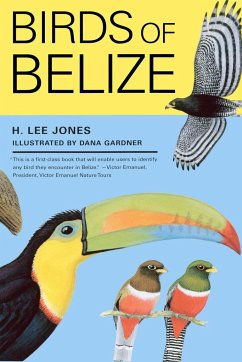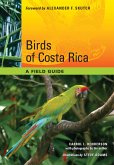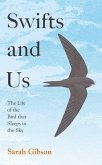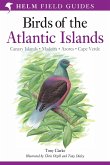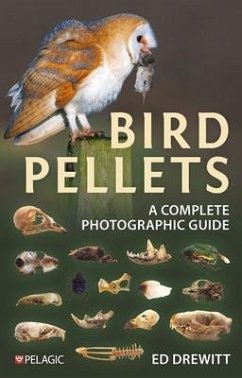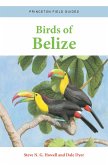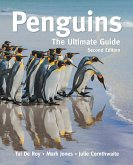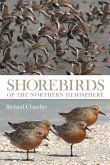- Broschiertes Buch
- Merkliste
- Auf die Merkliste
- Bewerten Bewerten
- Teilen
- Produkt teilen
- Produkterinnerung
- Produkterinnerung
Birds of Belize provides the first complete guide to the identification of all currently known species--574 in all.
Andere Kunden interessierten sich auch für
![Birds of Costa Rica Birds of Costa Rica]() Carrol L. HendersonBirds of Costa Rica33,99 €
Carrol L. HendersonBirds of Costa Rica33,99 €![Swifts and Us Swifts and Us]() Sarah GibsonSwifts and Us20,99 €
Sarah GibsonSwifts and Us20,99 €![Field Guide to the Birds of the Atlantic Islands Field Guide to the Birds of the Atlantic Islands]() Tony ClarkeField Guide to the Birds of the Atlantic Islands58,99 €
Tony ClarkeField Guide to the Birds of the Atlantic Islands58,99 €![Bird Pellets Bird Pellets]() Ed DrewittBird Pellets45,99 €
Ed DrewittBird Pellets45,99 €![Birds of Belize Birds of Belize]() Steve N. G. HowellBirds of Belize31,99 €
Steve N. G. HowellBirds of Belize31,99 €![Penguins Penguins]() Tui De RoyPenguins37,99 €
Tui De RoyPenguins37,99 €![Shorebirds of the Northern Hemisphere Shorebirds of the Northern Hemisphere]() Richard ChandlerShorebirds of the Northern Hemisphere82,99 €
Richard ChandlerShorebirds of the Northern Hemisphere82,99 €-
-
-
Birds of Belize provides the first complete guide to the identification of all currently known species--574 in all.
Hinweis: Dieser Artikel kann nur an eine deutsche Lieferadresse ausgeliefert werden.
Hinweis: Dieser Artikel kann nur an eine deutsche Lieferadresse ausgeliefert werden.
Produktdetails
- Produktdetails
- Verlag: University of Texas Press
- Seitenzahl: 440
- Erscheinungstermin: 1. Januar 2004
- Englisch
- Abmessung: 230mm x 154mm x 30mm
- Gewicht: 1032g
- ISBN-13: 9780292701649
- ISBN-10: 0292701640
- Artikelnr.: 20988298
- Herstellerkennzeichnung
- Libri GmbH
- Europaallee 1
- 36244 Bad Hersfeld
- 06621 890
- Verlag: University of Texas Press
- Seitenzahl: 440
- Erscheinungstermin: 1. Januar 2004
- Englisch
- Abmessung: 230mm x 154mm x 30mm
- Gewicht: 1032g
- ISBN-13: 9780292701649
- ISBN-10: 0292701640
- Artikelnr.: 20988298
- Herstellerkennzeichnung
- Libri GmbH
- Europaallee 1
- 36244 Bad Hersfeld
- 06621 890
By H. Lee Jones
1. Acknowledgments
2. Abbreviations Used in the Text
3. Introduction
* Geography and Climate
* Vegetation
* Habitat Types
* Avifauna
4. Using This Book
* Taxonomy
* Nomenclature
* Plumage and Molt
* Organization of the Species Accounts
* Bird Topography
* Range Maps
5. Family And Species Accounts
* Tinamidae (Tinamous)
* Podicipedidae (Grebes)
* Procellariidae (Shearwaters)
* Phaethontidae (Tropicbirds)
* Sulidae (Boobies and Gannets)
* Pelecanidae (Pelicans)
* Phalacrocoracidae (Cormorants)
* Anhingidae (Darters)
* Fregatidae (Frigatebirds)
* Ardeidae (Herons, Egrets, and Bitterns)
* Threskiornithidae (Ibises and Spoonbills)
* Ciconiidae (Storks)
* Cathartidae (New World Vultures)
* Phoenicopteridae (Flamingos)
* Anatidae (Ducks and Geese)
* Accipitridae (Hawks, Kites, and Eagles)
* Falconidae (Caracaras and Falcons)
* Cracidae (Curassows and Guans)
* Phasianidae (Turkeys, Grouse, Pheasants, and Others)
* Odontophoridae (New World Quail)
* Rallidae (Rails, Gallinules, and Coots)
* Heliornithidae (Sungrebes)
* Aramidae (Limpkin)
* Charadriidae (Plovers)
* Haematopodidae (Oystercatchers)
* Recurvirostridae (Stilts and Avocets)
* Jacanidae (Jacanas)
* Scolopacidae (Sandpipers and Phalaropes)
* Laridae (Skuas, Gulls, Terns, and Skimmers)
* Columbidae (Pigeons and Doves)
* Psittacidae (Parrots)
* Cuculidae (Cuckoos and Anis)
* Tytonidae (Barn Owls)
* Strigidae (Typical Owls)
* Caprimulgidae (Nighthawks and Nightjars)
* Nyctibiidae (Potoos)
* Apodidae (Swifts)
* Trochilidae (Hummingbirds)
* Trogonidae (Trogons)
* Momotidae (Motmots)
* Alcedinidae (Kingfishers)
* Bucconidae (Puftbirds)
* Galbulidae (Jacamars)
* Ramphastidae (Toucans)
* Picidae (Woodpeckers)
* Furnariidae (Ovenbirds)
* Dendrocolaptidae (Woodcreepers)
* Thamnophilidae (Antbirds)
* Formicariidae (Antthrushes)
* Tyrannidae (Tyrant Flycatchers)
* Cotingidae (Cotingas)
* Pipridae (Manakins)
* Vireonidae (Vireos)
* Corvidae (Jays, Crows, and Magpies)
* Hirundinidae (Swallows)
* Troglodytidae (Wrens)
* Sylviidae (Old World Warblers, Gnatcatchers, and Gnatwrens)
* Turdidae (Thrushes)
* Mimidae (Thrashers)
* Motacillidae (Pipits and Wagtails)
* Bombycillidae (Waxwings)
* Parulidae (Wood-Warblers)
* Coerebidae (Bananaquit)
* Thraupidae (Tanagers)
* Emberizidae (Seedeaters and Sparrows)
* Cardinalidae (Saltators, Grosbeaks, and Buntings)
* Icteridae (Blackbirds)
* Fringillidae (Finches)
* Passeridae (Old World Sparrows)
6. References
7. Range Maps
8. Index
2. Abbreviations Used in the Text
3. Introduction
* Geography and Climate
* Vegetation
* Habitat Types
* Avifauna
4. Using This Book
* Taxonomy
* Nomenclature
* Plumage and Molt
* Organization of the Species Accounts
* Bird Topography
* Range Maps
5. Family And Species Accounts
* Tinamidae (Tinamous)
* Podicipedidae (Grebes)
* Procellariidae (Shearwaters)
* Phaethontidae (Tropicbirds)
* Sulidae (Boobies and Gannets)
* Pelecanidae (Pelicans)
* Phalacrocoracidae (Cormorants)
* Anhingidae (Darters)
* Fregatidae (Frigatebirds)
* Ardeidae (Herons, Egrets, and Bitterns)
* Threskiornithidae (Ibises and Spoonbills)
* Ciconiidae (Storks)
* Cathartidae (New World Vultures)
* Phoenicopteridae (Flamingos)
* Anatidae (Ducks and Geese)
* Accipitridae (Hawks, Kites, and Eagles)
* Falconidae (Caracaras and Falcons)
* Cracidae (Curassows and Guans)
* Phasianidae (Turkeys, Grouse, Pheasants, and Others)
* Odontophoridae (New World Quail)
* Rallidae (Rails, Gallinules, and Coots)
* Heliornithidae (Sungrebes)
* Aramidae (Limpkin)
* Charadriidae (Plovers)
* Haematopodidae (Oystercatchers)
* Recurvirostridae (Stilts and Avocets)
* Jacanidae (Jacanas)
* Scolopacidae (Sandpipers and Phalaropes)
* Laridae (Skuas, Gulls, Terns, and Skimmers)
* Columbidae (Pigeons and Doves)
* Psittacidae (Parrots)
* Cuculidae (Cuckoos and Anis)
* Tytonidae (Barn Owls)
* Strigidae (Typical Owls)
* Caprimulgidae (Nighthawks and Nightjars)
* Nyctibiidae (Potoos)
* Apodidae (Swifts)
* Trochilidae (Hummingbirds)
* Trogonidae (Trogons)
* Momotidae (Motmots)
* Alcedinidae (Kingfishers)
* Bucconidae (Puftbirds)
* Galbulidae (Jacamars)
* Ramphastidae (Toucans)
* Picidae (Woodpeckers)
* Furnariidae (Ovenbirds)
* Dendrocolaptidae (Woodcreepers)
* Thamnophilidae (Antbirds)
* Formicariidae (Antthrushes)
* Tyrannidae (Tyrant Flycatchers)
* Cotingidae (Cotingas)
* Pipridae (Manakins)
* Vireonidae (Vireos)
* Corvidae (Jays, Crows, and Magpies)
* Hirundinidae (Swallows)
* Troglodytidae (Wrens)
* Sylviidae (Old World Warblers, Gnatcatchers, and Gnatwrens)
* Turdidae (Thrushes)
* Mimidae (Thrashers)
* Motacillidae (Pipits and Wagtails)
* Bombycillidae (Waxwings)
* Parulidae (Wood-Warblers)
* Coerebidae (Bananaquit)
* Thraupidae (Tanagers)
* Emberizidae (Seedeaters and Sparrows)
* Cardinalidae (Saltators, Grosbeaks, and Buntings)
* Icteridae (Blackbirds)
* Fringillidae (Finches)
* Passeridae (Old World Sparrows)
6. References
7. Range Maps
8. Index
1. Acknowledgments
2. Abbreviations Used in the Text
3. Introduction
* Geography and Climate
* Vegetation
* Habitat Types
* Avifauna
4. Using This Book
* Taxonomy
* Nomenclature
* Plumage and Molt
* Organization of the Species Accounts
* Bird Topography
* Range Maps
5. Family And Species Accounts
* Tinamidae (Tinamous)
* Podicipedidae (Grebes)
* Procellariidae (Shearwaters)
* Phaethontidae (Tropicbirds)
* Sulidae (Boobies and Gannets)
* Pelecanidae (Pelicans)
* Phalacrocoracidae (Cormorants)
* Anhingidae (Darters)
* Fregatidae (Frigatebirds)
* Ardeidae (Herons, Egrets, and Bitterns)
* Threskiornithidae (Ibises and Spoonbills)
* Ciconiidae (Storks)
* Cathartidae (New World Vultures)
* Phoenicopteridae (Flamingos)
* Anatidae (Ducks and Geese)
* Accipitridae (Hawks, Kites, and Eagles)
* Falconidae (Caracaras and Falcons)
* Cracidae (Curassows and Guans)
* Phasianidae (Turkeys, Grouse, Pheasants, and Others)
* Odontophoridae (New World Quail)
* Rallidae (Rails, Gallinules, and Coots)
* Heliornithidae (Sungrebes)
* Aramidae (Limpkin)
* Charadriidae (Plovers)
* Haematopodidae (Oystercatchers)
* Recurvirostridae (Stilts and Avocets)
* Jacanidae (Jacanas)
* Scolopacidae (Sandpipers and Phalaropes)
* Laridae (Skuas, Gulls, Terns, and Skimmers)
* Columbidae (Pigeons and Doves)
* Psittacidae (Parrots)
* Cuculidae (Cuckoos and Anis)
* Tytonidae (Barn Owls)
* Strigidae (Typical Owls)
* Caprimulgidae (Nighthawks and Nightjars)
* Nyctibiidae (Potoos)
* Apodidae (Swifts)
* Trochilidae (Hummingbirds)
* Trogonidae (Trogons)
* Momotidae (Motmots)
* Alcedinidae (Kingfishers)
* Bucconidae (Puftbirds)
* Galbulidae (Jacamars)
* Ramphastidae (Toucans)
* Picidae (Woodpeckers)
* Furnariidae (Ovenbirds)
* Dendrocolaptidae (Woodcreepers)
* Thamnophilidae (Antbirds)
* Formicariidae (Antthrushes)
* Tyrannidae (Tyrant Flycatchers)
* Cotingidae (Cotingas)
* Pipridae (Manakins)
* Vireonidae (Vireos)
* Corvidae (Jays, Crows, and Magpies)
* Hirundinidae (Swallows)
* Troglodytidae (Wrens)
* Sylviidae (Old World Warblers, Gnatcatchers, and Gnatwrens)
* Turdidae (Thrushes)
* Mimidae (Thrashers)
* Motacillidae (Pipits and Wagtails)
* Bombycillidae (Waxwings)
* Parulidae (Wood-Warblers)
* Coerebidae (Bananaquit)
* Thraupidae (Tanagers)
* Emberizidae (Seedeaters and Sparrows)
* Cardinalidae (Saltators, Grosbeaks, and Buntings)
* Icteridae (Blackbirds)
* Fringillidae (Finches)
* Passeridae (Old World Sparrows)
6. References
7. Range Maps
8. Index
2. Abbreviations Used in the Text
3. Introduction
* Geography and Climate
* Vegetation
* Habitat Types
* Avifauna
4. Using This Book
* Taxonomy
* Nomenclature
* Plumage and Molt
* Organization of the Species Accounts
* Bird Topography
* Range Maps
5. Family And Species Accounts
* Tinamidae (Tinamous)
* Podicipedidae (Grebes)
* Procellariidae (Shearwaters)
* Phaethontidae (Tropicbirds)
* Sulidae (Boobies and Gannets)
* Pelecanidae (Pelicans)
* Phalacrocoracidae (Cormorants)
* Anhingidae (Darters)
* Fregatidae (Frigatebirds)
* Ardeidae (Herons, Egrets, and Bitterns)
* Threskiornithidae (Ibises and Spoonbills)
* Ciconiidae (Storks)
* Cathartidae (New World Vultures)
* Phoenicopteridae (Flamingos)
* Anatidae (Ducks and Geese)
* Accipitridae (Hawks, Kites, and Eagles)
* Falconidae (Caracaras and Falcons)
* Cracidae (Curassows and Guans)
* Phasianidae (Turkeys, Grouse, Pheasants, and Others)
* Odontophoridae (New World Quail)
* Rallidae (Rails, Gallinules, and Coots)
* Heliornithidae (Sungrebes)
* Aramidae (Limpkin)
* Charadriidae (Plovers)
* Haematopodidae (Oystercatchers)
* Recurvirostridae (Stilts and Avocets)
* Jacanidae (Jacanas)
* Scolopacidae (Sandpipers and Phalaropes)
* Laridae (Skuas, Gulls, Terns, and Skimmers)
* Columbidae (Pigeons and Doves)
* Psittacidae (Parrots)
* Cuculidae (Cuckoos and Anis)
* Tytonidae (Barn Owls)
* Strigidae (Typical Owls)
* Caprimulgidae (Nighthawks and Nightjars)
* Nyctibiidae (Potoos)
* Apodidae (Swifts)
* Trochilidae (Hummingbirds)
* Trogonidae (Trogons)
* Momotidae (Motmots)
* Alcedinidae (Kingfishers)
* Bucconidae (Puftbirds)
* Galbulidae (Jacamars)
* Ramphastidae (Toucans)
* Picidae (Woodpeckers)
* Furnariidae (Ovenbirds)
* Dendrocolaptidae (Woodcreepers)
* Thamnophilidae (Antbirds)
* Formicariidae (Antthrushes)
* Tyrannidae (Tyrant Flycatchers)
* Cotingidae (Cotingas)
* Pipridae (Manakins)
* Vireonidae (Vireos)
* Corvidae (Jays, Crows, and Magpies)
* Hirundinidae (Swallows)
* Troglodytidae (Wrens)
* Sylviidae (Old World Warblers, Gnatcatchers, and Gnatwrens)
* Turdidae (Thrushes)
* Mimidae (Thrashers)
* Motacillidae (Pipits and Wagtails)
* Bombycillidae (Waxwings)
* Parulidae (Wood-Warblers)
* Coerebidae (Bananaquit)
* Thraupidae (Tanagers)
* Emberizidae (Seedeaters and Sparrows)
* Cardinalidae (Saltators, Grosbeaks, and Buntings)
* Icteridae (Blackbirds)
* Fringillidae (Finches)
* Passeridae (Old World Sparrows)
6. References
7. Range Maps
8. Index

